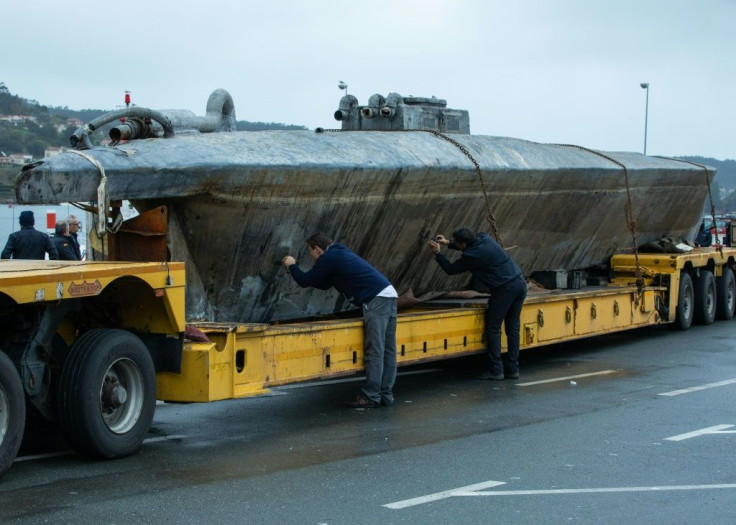Submarine Seized In Spain Was Carrying Three Tonnes Of Cocaine

A submarine seized off the Spanish coast over the weekend, the first caught trying to smuggle narcotics into Europe, was carrying three tonnes of cocaine worth 100 million euros ($110 million), officials said Wednesday.
Police intercepted the 20-metre (65-foot) submarine on Saturday off the coast of the northwestern Galicia region.
They were only able to determine the amount of drugs inside after they managed to refloat the vessel three days later and tow it to a nearby port.
They found 152 bundles with three tonnes of cocaine, Spanish police said in a statement.
While drug traffickers, especially from Colombia, have been caught using submarines to transport cocaine into Mexico, and from there into the United States, police said "this is the first time that this system of transporting drugs has been detected in Europe."
The drugs had a street value of 100 million euros, the central government's representative in Galicia, Javier Losada de Azpiazu, told reporters.
"This is a historic operation, which will mark a before and after," he said.
A source close to the investigation had previously told AFP that the submarine came from South America but Losada de Azpiazu said police were still working to determine its exact origin.
A total of 240 agents took part in the operation, which was carried out in cooperation with police from Brazil, Portugal and the United States, he added.
Two Ecuadorian nationals were detained as they tried to escape from the submarine when police moved in. A third person is still on the run.
Spanish authorities said the hand-made submarine had the capacity to transport up to five tonnes of cocaine.
Drug gangs began making frequent use of submarines to smuggle narcotics in 2005, said Robert J. Bunker, a professor at the U.S. Army War College in Pennsylvania who has studied drug cartels.
The vessels are usually built in remote river inlets in the jungles of Colombia, Ecuador and Guyana for around a million dollars "but can run into a few million dollars for larger or more sophisticated vessels," he told AFP.
"The best candidates to man such submarines would be fishermen with the ability to navigate in the open sea and be able to fix the onboard engines and other vessel systems if they should break down," he added.
Bunker estimates that drug cartels have to date built around a thousand so-called "narco submarines".
Most are only semi-submersible -- a ship partially submerged that cannot fully dive like a submarine.
Galicia, one of Spain's poorest regions, is a top entry point for cocaine into Europe. A maze of coves, caves and inlets dot its rugged coastline, making it a smuggler's paradise.
Spain accounted for the second-highest proportion of cocaine seizures in the European Union last year after Belgium, with 41 tonnes apprehended.
© Copyright AFP {{Year}}. All rights reserved.





















